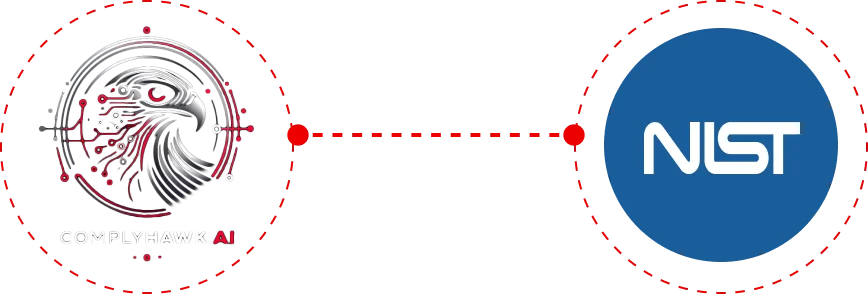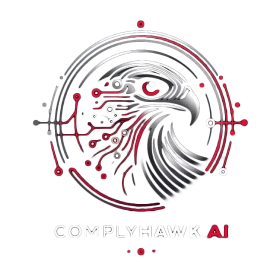- Solutions
By Company
By Industry
- Partners
- About Us
- Contact Us
Streamline Your Path to NIST Certification
A concise description that explains how the service simplifies and streamlines the complex process of achieving and maintaining NIST compliance, emphasizing the ease and efficiency brought by automation.

Our Team Has Worked with Clients at





What is the NIST Cybersecurity Framework (CSF)?
The NIST CSF is a set of industry standards and best practices designed to help organizations manage cybersecurity risks. Originally developed for critical infrastructure sectors in the United States, it has gained global adoption due to its flexibility and effectiveness.
While the NIST CSF was initially intended for critical infrastructure, it is applicable to organizations of all sizes and industries, particularly those looking to enhance their cybersecurity posture.

What's Included With NIST
All-in-One Platform for Your NIST Needs
Real-Time Monitoring
Stay compliant with 24/7 oversight and full visibility into your NIST status.
Policy Management Hub
Streamline your documentation and policy management with over 20 editable, auditor-approved templates.
Automated Asset Tracking
Maintain an accurate inventory of all physical and virtual assets within your organization.
Risk Evaluation Tools
Conduct self-assessments to efficiently monitor and report on your security program’s effectiveness.
Vendor Management System
Centralize the management of vendor security assessments, including questionnaire handling and reviews.
Expert Support Access
Get real-time assistance from compliance experts and former auditors via live chat.
Frequently Asked Questions
Organizations should review their NIST CSF implementation at least annually, but more frequent assessments are advisable in response to significant changes in the threat landscape, business environment, or regulatory requirements.
Absolutely! The NIST CSF is designed to be scalable and flexible, making it an ideal framework for small businesses seeking to establish effective cybersecurity practices without overwhelming them with complexity.
Numerous resources are available, including NIST publications, online training programs, industry forums, and consulting services. These resources can provide practical guidance and support throughout the implementation process.
The NIST CSF is designed to be adaptive, allowing organizations to update their practices as new threats emerge. By regularly assessing their risk environment and aligning their strategies with the framework, organizations can better respond to evolving cyber threats.
Effectiveness can be measured through regular audits, assessments of incident response times, and feedback from stakeholders. Additionally, tracking improvements in risk management metrics over time can help organizations evaluate their progress.
Leadership and stakeholders play a crucial role in the successful implementation of the NIST CSF. They are responsible for fostering a cybersecurity-aware culture, ensuring that adequate resources are allocated, and supporting the development of policies and procedures that align with the framework. Their engagement is essential for driving accountability and promoting a unified approach to managing cybersecurity risks across the organization.
Training and awareness programs are vital for enhancing NIST CSF adoption by equipping employees with the knowledge and skills needed to identify and respond to cybersecurity threats effectively. Such programs help cultivate a proactive security culture, promote adherence to best practices, and ensure that all staff members understand their roles in safeguarding the organization’s assets.
Organizations should be cautious of several common pitfalls when implementing the NIST CSF, including insufficient stakeholder involvement, lack of clear objectives, and failing to communicate the importance of the framework throughout the organization. Additionally, neglecting to regularly review and update the implementation process can hinder the effectiveness of the framework in addressing evolving cybersecurity challenges.
Organizations can tailor the NIST CSF by aligning its core functions (Identify, Protect, Detect, Respond, Recover) with their specific operational requirements, risk profile, and business objectives. This customization helps ensure that the framework addresses unique challenges and vulnerabilities.
Organizations should track various metrics, such as the number of detected incidents, response and recovery times, employee training completion rates, and vulnerability assessment results. These metrics provide valuable insights into the organization’s cybersecurity effectiveness and areas needing improvement.
Cross-departmental collaboration fosters a holistic approach to cybersecurity, allowing for the sharing of diverse insights, expertise, and resources. By working together, departments can craft comprehensive strategies that address vulnerabilities across different areas of the organization, ultimately strengthening the overall cybersecurity posture.
Engaging third-party experts can provide organizations with specialized knowledge, industry best practices, and an objective perspective on their cybersecurity strategies. These experts can assist in identifying gaps, developing customized action plans, and ensuring that organizations stay current with evolving threats and regulatory requirements.
Cross-departmental collaboration fosters a holistic approach to cybersecurity, allowing for the sharing of diverse insights, expertise, and resources. By working together, departments can craft comprehensive strategies that address vulnerabilities across different areas of the organization, ultimately strengthening the overall cybersecurity posture.
Ready to Simplify Your NIST Compliance?
Experience the ease of managing your NIST certification with our all-in-one platform. Get started today to streamline your compliance, enhance your security posture, and stay ahead of the curve.
